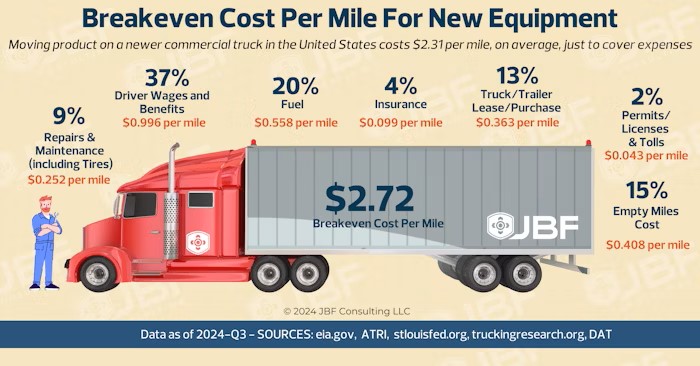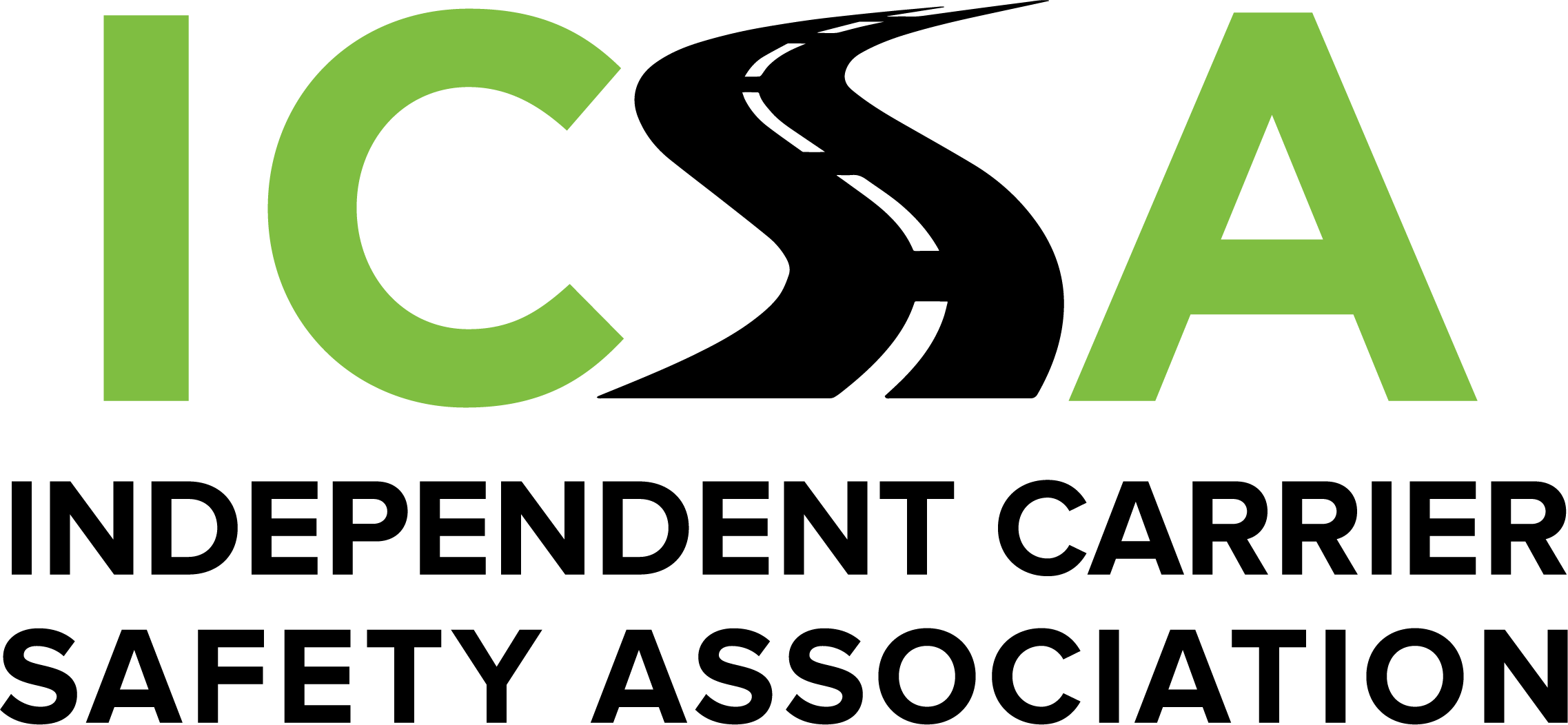An article recently published in CCJ Digital provided an overview of data that demonstrates that the average truckload carrier must be paid $2.72 per mile merely to break even. CCJ has given ICSA permission to quote from the article as well as to excerpt relevant content.
In the article, CCJ writer Pamella De Leon cited a report issued by JBF Consulting that verified the current break-even cost per mile for truckload carriers. This figure represents a 4.4% increase from the firm’s estimate in September 2023.
The report used data from American Transportation Research Institute (ATRI), U.S. Energy Information Administration, Federal Reserve Bank of St. Louis, and DAT Freight & Analytics. JBF said their analysis also factored in the cost of empty miles, at a rate of $0.408 per mile based on an average empty miles percentage of 15%. This increase in empty miles from previous years was caused primarily by lower overall freight volumes.
JBF also reported that contract rates in the current market have gradually declined over the past year and now hover around $2.40 per mile, or $.32 below the breakeven point. JBF said that the data points to an ongoing convergence of contract and spot rates, resulting in somewhat lower break-even operating costs for more stable lanes, where empty miles are often minimized.
The report also noted that cost factors have changed in the past year, too. While fuel costs have declined, they were offset by higher costs for driver wages, lease/purchase prices and maintenance. Lower fuel prices may have contributed to wage increases without carriers raising total costs or prices to compensate. Interestingly, 2023 was the first year that driver wages and benefits reached $1 per mile in cost.
The report acknowledges that many TL carriers often must operate outside the dedicated contract environment, resulting in empty miles ranging from 10% to 20% of total miles. “This time next year, we’re going to be looking at a significant increase of 15% to 20% in overall costs if things stay fairly status quo,” said JBF’s Chris Doersen.
Despite the decline in fuel costs, the spot market remains steady at or above $2.00 per mile. As in the prior year, freight prices have little room to go lower, the report noted, as many carriers are likely operating at breakeven or at a loss on spot moves to reduce empty miles, which may not be viable in the long term.
“We’ve hit a point where most rates [are around] 40% increase on the cost structure right now from five years ago,” said Doersen.
To mitigate the impact of increased costs, Doersen suggested carriers develop relationships with shippers and give them a heads-up to soften the blow when these price swings happen.
“From a shipper perspective, there’s a lot more incentive right now to go to contract rates away from the spot market. So, carriers that are operating more in the spot market may look to shift more to contract rates for short periods of six to 12 months and see if they can get a higher rate right now,” he said.
While the report indicated an increase in costs, Doersen pointed out that for a reduction in costs to happen, there would need to be a new wave of drivers to join the workforce, as well as government support to offer subsidy programs.
“Anything over the course of the next year, shifting inventory closer to demand points, and just actually, reducing the amount of freight, would see an overall cost drop, but that’s also going to have a corresponding [drop in] demand as well,” he added. The other factor that could drive costs downward is a true recessionary period, “which hopefully doesn’t occur,” Doersen said.



